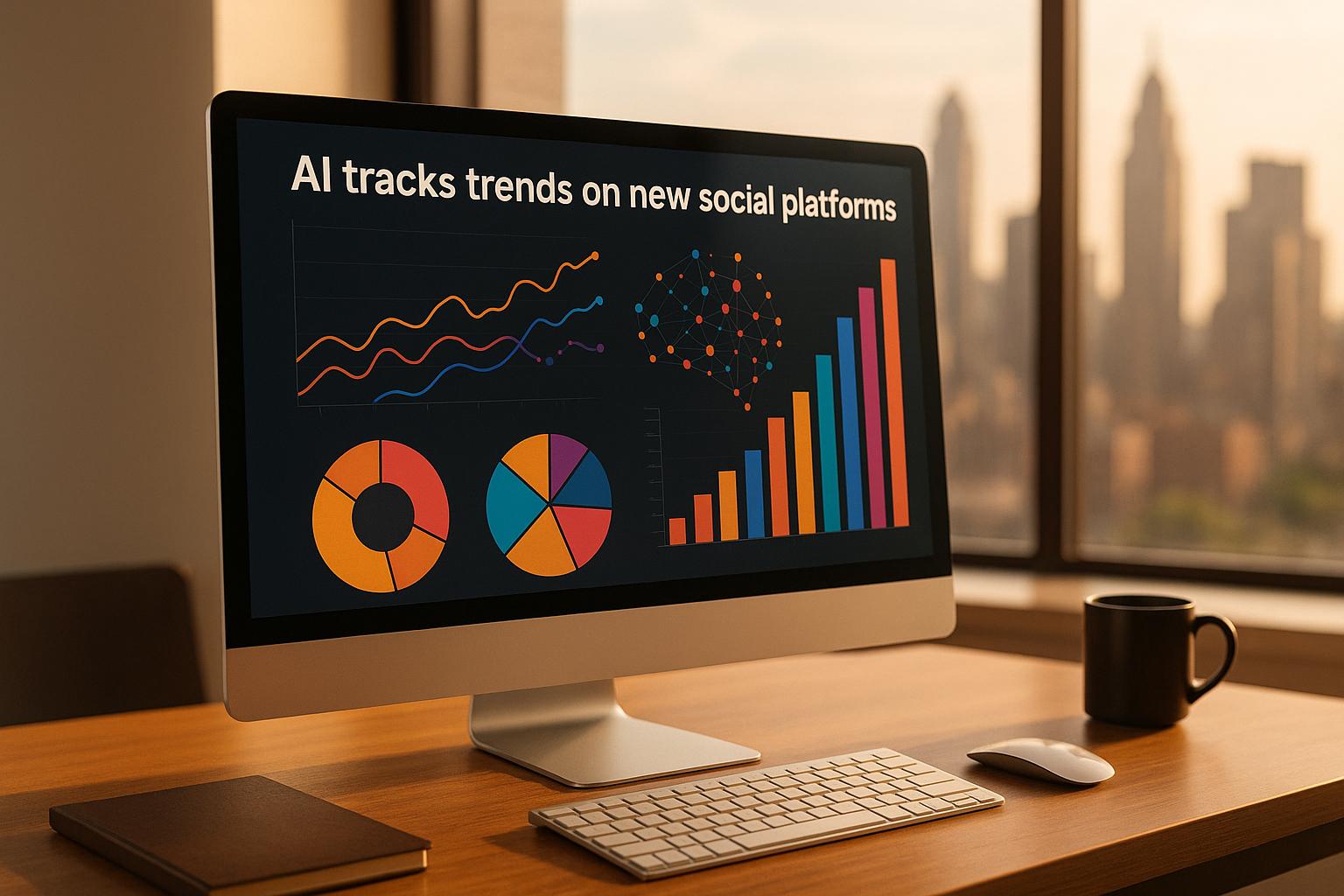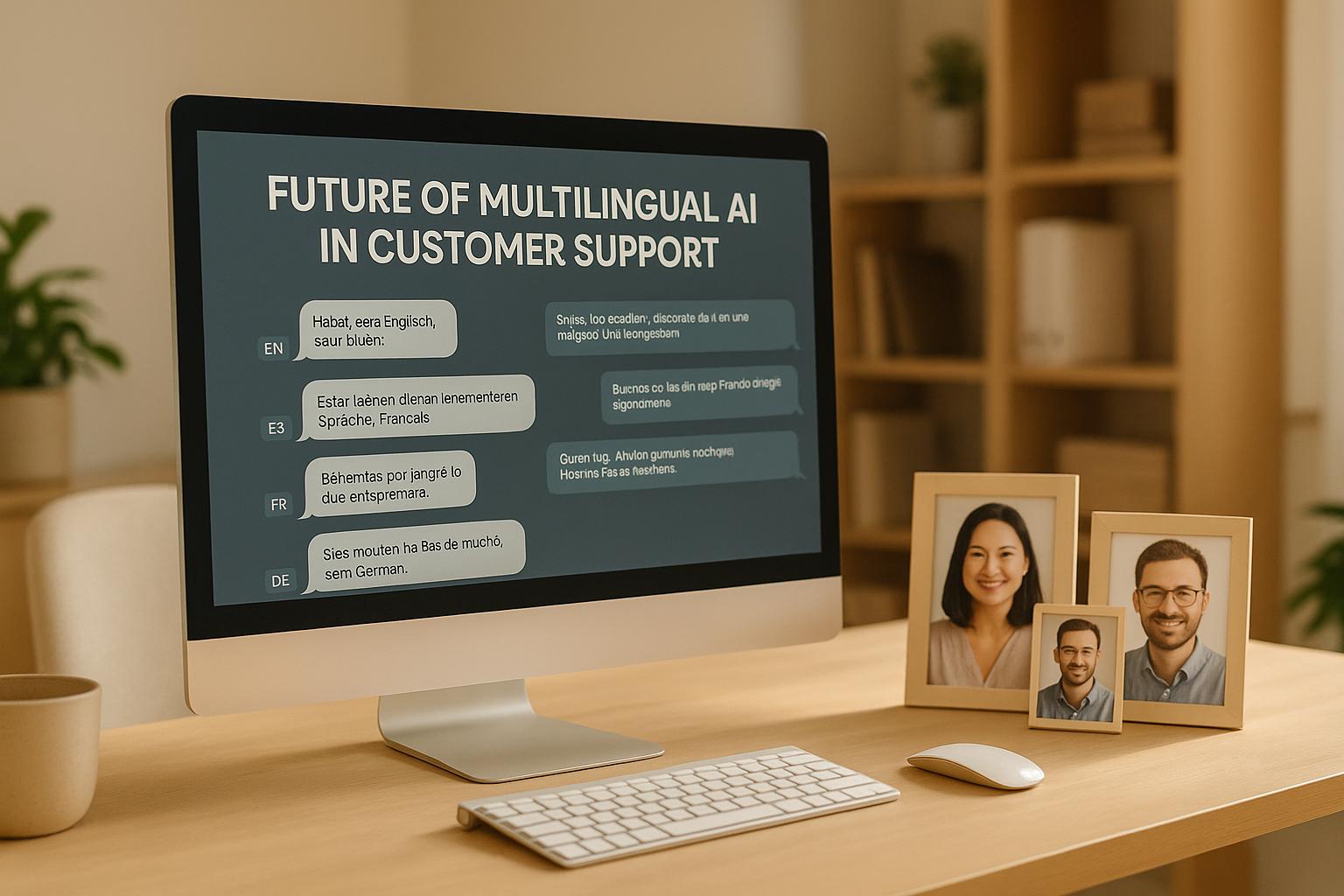Predictive analytics helps businesses make smarter decisions by using past data to predict future outcomes. Companies use tools like machine learning, statistical models, and data mining to improve decision accuracy, reduce risks, and better understand customers. Here’s how it works:
- Better Decisions: Companies using predictive analytics see a 10-20% profit boost. Example: Netflix’s recommendations drive 80% of content views.
- Risk Management: Tools identify risks early. Example: JPMorgan Chase’s fraud detection saves billions annually.
- Customer Insights: Businesses like Amazon use predictive analytics for inventory and customer satisfaction, improving retention and sales.
To get started, define clear business goals, choose the right tools, and focus on data quality. Predictive analytics is transforming industries by saving time, cutting costs, and enhancing customer experiences.
How AI Works In Predictive Analytics For Decision Making
Main Benefits for Business Decisions
Better Decision Accuracy
Predictive analytics improves decision-making by using advanced data analysis and machine learning. A study by McKinsey Global Institute shows that companies using these tools see a 10-20% profit boost compared to those relying on older methods .
What makes predictive analytics so effective? Its ability to handle massive datasets and uncover hidden patterns. Take Netflix, for example - their recommendation system, powered by predictive analytics, is responsible for 80% of content views and helps maintain a 93% retention rate .
This level of precision doesn't just enhance profits; it also strengthens risk management and customer-focused strategies.
Risk Prevention
Managing risks has become more challenging - 64% of risk managers report increased complexity over the past year . Predictive analytics offers a proactive way to address this by identifying risks early and preventing them from escalating.
| Risk Type | Traditional Method | Predictive Analytics Method |
|---|---|---|
| Financial Risk | Manual credit checks | Automated risk scoring using diverse data |
| Operational Risk | Scheduled maintenance | Predictive maintenance using equipment data |
| Market Risk | Historical trend analysis | Real-time market pattern recognition |
JPMorgan Chase provides a great example. Their AI-driven fraud detection system saves billions annually and has reduced account validation rejection rates by 15-20% .
Customer Understanding
Predictive analytics revolutionizes how businesses understand and serve their customers. By analyzing behavior and preferences across various channels, companies can make smarter decisions. For example, Amazon uses predictive analytics to manage over 400 million products, ensuring better inventory control and improving customer satisfaction through reliable product availability .
In another case, a major fashion retailer saw a 20% jump in repeat purchases within six months by using predictive analytics to enhance customer engagement. Similarly, a B2B company leveraging Salesforce's tools achieved a 40% increase in lead conversion rates .
These examples highlight how predictive analytics can reshape customer strategies and drive better outcomes.
Setting Up Predictive Analytics
Define Business Goals
To get started with predictive analytics, you need clear business objectives. As David Loshin from Knowledge Integrity Inc. puts it, "The best predictive models are ones that share two important features: accuracy on predictions and relevance to the business" .
Focus on specific challenges that predictive analytics can solve. Success hinges on setting measurable goals that align with your organization's priorities and the data available.
| Business Area | Common Objectives | Measurable Outcomes |
|---|---|---|
| Revenue | Sales forecasting | Revenue growth percentage |
| Customer | Churn prediction | Increase in retention rate |
| Operations | Fraud detection | Cost reduction |
| Marketing | Campaign optimization | Conversion rate improvement |
Select Analytics Tools
Choosing the right tools is just as important as defining your goals. Carlie Idoine, vice president analyst at Gartner, emphasizes, "It is one thing to have technology that's accessible but even better to know how to apply that technology to specific problems within an industry or a functional area of the organization" .
Here are key factors to consider when selecting analytics tools:
-
Platform Type
SaaS solutions are easier to implement and often more budget-friendly, making them ideal for non-technical teams. On the other hand, self-hosted platforms offer more customization. For example, tools listed in the AI for Businesses directory, like Writesonic and Stability.ai, cater to different deployment needs. -
User Expertise Level
Modern tools are designed for users with varying skill levels. "You don't have to be an expert to go in and use these tools anymore", says Carlie Idoine . Match the tool's complexity with your team's abilities to ensure smooth adoption. -
Scalability Requirements
Look for tools that can handle your growing needs, whether it's increasing data volumes or more complex queries . Pay attention to factors like storage capacity, processing power, and integration options.
Once you've picked the right tools, the next step is turning data into actionable insights.
Apply Insights to Decisions
The real value of predictive analytics lies in using insights to drive business actions. Companies like Harley-Davidson show how effective implementation can boost results. They use predictive analytics to identify high-value customers, helping their marketing and sales teams focus their efforts .
To get the most out of predictive insights:
- Start with small-scale trials and expand based on success.
- Regularly check the quality of your data.
- Continuously update and monitor your models.
- Develop clear processes to turn insights into concrete actions.
sbb-itb-bec6a7e
Using Analytics Effectively
Data Quality Management
Did you know that poor data quality can cost businesses $5,600 per minute in downtime? . To avoid this, it’s crucial to have a solid framework for managing data quality. Here’s a breakdown of key areas to focus on:
| Quality Dimension | Key Actions | Expected Outcome |
|---|---|---|
| Accuracy | Use automated validation checks | Fewer prediction errors |
| Completeness | Regularly audit for missing data | More dependable model results |
| Consistency | Standardize how data is collected | Better cross-team analysis |
| Timeliness | Implement real-time validation | Insights that stay current |
"Predictive data quality refers to the assessment and improvement of data so that it is most useful and effective for predictive modeling or other types of data analytics. In other words, it is the set of practices that ensures the data you are using to make predictions is as accurate, complete, and timely as possible", explains Atlan .
Focusing on these dimensions ensures your predictive models deliver reliable and actionable results. But data alone isn’t enough - you need to combine it with expert judgment for well-rounded decisions.
Balance Data and Expertise
Organizations that succeed often blend data-driven insights with human intuition. Take Amazon’s expansion into cloud computing with AWS as an example. Data showed rising demand for cloud services, but Jeff Bezos’s vision of its potential was just as critical .
To strike the right balance between data and expertise:
- Use data to confirm or challenge gut instincts.
- Leverage industry knowledge to interpret analytics.
- Create feedback loops where data informs expertise and vice versa.
Starbucks offers another great example. When selecting new store locations, they pair analytics with input from local managers . This dual approach ensures decisions aren’t just numbers-driven but also account for real-world factors that algorithms might miss. Once you’ve got this balance, the next step is to embed it into your company culture.
Build Data-First Culture
A strong data-first culture can transform operations. Companies with high data literacy often see lower costs and more efficient processes - sometimes cutting expenses in half and doubling efficiency .
Google’s People Analytics Team shows how impactful this can be. By analyzing performance reviews and feedback surveys, they found that technical skills were the least important for engineering managers. This insight led to revamped management training, boosting team performance.
To build a data-first culture:
- Get Leadership On Board
Leaders need to advocate for data-driven decisions and set the tone by using data themselves. - Invest in Tools and Training
Equip teams with the right analytics tools and ensure they know how to use them effectively. - Define Clear Metrics
Set specific KPIs tied to business goals and track them consistently.
Solving Common Problems
Privacy and Ethics
Data privacy violations can cost up to $50,000 per HIPAA violation . To tackle privacy and ethical challenges effectively, focus on these areas:
| Area | Challenge | Solution |
|---|---|---|
| Data Collection | Consent and transparency | Use clear privacy policies written in plain language. |
| Storage Security | Data breaches | Conduct regular security audits and implement encryption. |
| Usage Ethics | Algorithmic bias | Utilize diverse training data and conduct fairness checks. |
| Compliance | Regulatory requirements | Leverage policy management tools and maintain proper documentation. |
"In our view, compliance-based approaches to privacy protection tend to focus on addressing privacy breaches after the fact. Instead, we recommend that organizations build privacy protections into their technology, business strategies and operational processes to prevent breaches before they happen." - Deloitte
With 2.5 quintillion bytes of data created daily , handling it responsibly is critical. Strong privacy practices not only protect data but also lay the foundation for building a capable analytics team.
Skills Development
Once secure data practices are in place, the next step is developing analytics skills. The U.S. Bureau of Labor Statistics predicts a 36% rise in data science jobs by 2031 . Companies that succeed in this area often take creative approaches:
"As manager of the AI and data analytics technical team, I've utilized internal hackathons to improve the skills of my team while they tackle actual business challenges... This approach facilitated teamwork and innovation while providing employees with the opportunity to implement and improve their skills in a practical, engaging environment. This method accelerated skill acquisition and enhanced operational capacity." - John Butterworth, Founder and CEO at 10kschools
Here’s how you can strengthen your team’s skills:
- Assess Current Capabilities: Create a skills matrix to evaluate proficiency in areas like SQL, business analysis, and AI implementation .
- Design Targeted Training: Focus on both technical and soft skills. Lucas Ochoa, CEO of Automat, shared, "We encouraged our team to earn certifications like Google's TensorFlow Developer Certificate or Microsoft's AI Engineer Certification. Sponsoring these efforts boosted confidence and improved their work profiles" .
- Measure Progress: Track improvement through practical projects and certification completions. Use regular feedback sessions to refine your training approach.
Getting Management Support
Once your team is equipped with the right skills, gaining management support is the next step. For example, the Canadian Automobile Association cut its forecast generation time by 30% after adopting predictive analytics . Combining empowered teams with ethical practices can deliver measurable business results.
| Strategy | Implementation | Expected Outcome |
|---|---|---|
| ROI Analysis | Quantify cost savings and revenue potential. | Provide clear financial justification. |
| Pilot Projects | Start with small, measurable projects. | Prove concepts with minimal risk. |
| Executive Education | Link technical benefits to business outcomes. | Build understanding and support. |
| Success Stories | Share industry peer results. | Showcase real-world value. |
When pitching to leadership, emphasize business impact over technical specifics. With the predictive analytics market expected to hit $67.86 billion by 2032 , positioning your organization for growth is essential. Begin by identifying key stakeholders and aligning your proposal with their goals and KPIs . Patience and persistence will pay off.
Conclusion
Key Benefits Overview
Predictive analytics can reshape how businesses make decisions by addressing issues like poor data quality, which can cost companies up to $12.9 million annually . These tools improve accuracy, streamline operations, and boost customer engagement in meaningful ways:
| Area | Impact | Example |
|---|---|---|
| Customer Experience | More tailored recommendations and better retention | Sephora uses purchase data to suggest products, achieving 80% customer loyalty |
| Operational Efficiency | Cuts manual work and reduces costs | Hitachi Solutions helped a client automate reporting, saving $100,000 annually |
| Risk Management | Better fraud detection and prevention | Harley-Davidson identifies high-value customers for targeted outreach |
| Decision Accuracy | Data-driven forecasting | A medical tech company cut reporting time from one week to a few hours using predictive analytics |
These examples highlight how predictive analytics can create measurable improvements across various aspects of a business.
Steps to Get Started
To successfully implement predictive analytics, start with clear goals and a review of your data sources. Then, follow this structured approach:
| Phase | Action | Outcome |
|---|---|---|
| Initial Setup | Define key business questions and data needs | A focused strategy |
| Data Preparation | Clean and organize your datasets | A solid foundation for analysis |
| Model Development | Test predictive models on smaller groups | Confidence in your approach |
| Deployment | Apply insights to business processes | Better, actionable decisions |
With the predictive analytics market expected to hit $10.95 billion by 2022 , now is the time to act. Platforms like AI for Businesses offer tools tailored for small and medium-sized companies, helping them integrate predictive analytics into their operations for smarter decision-making.


